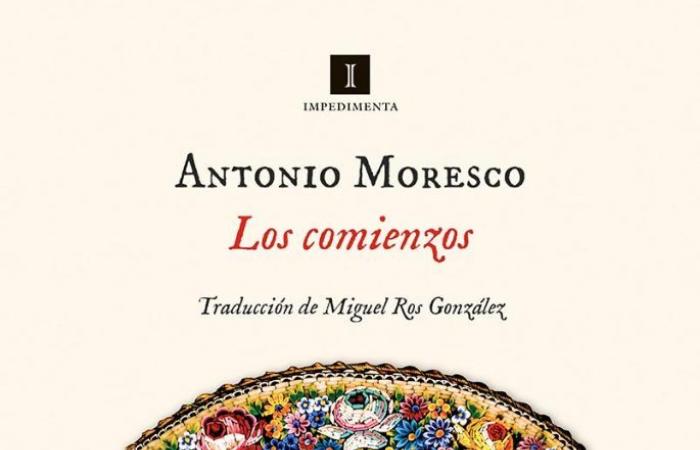«“Words, at first, always start like this,” he told me on the way to church. “When one of them comes out of her mouth, there is no one to stop it. We emit the air and give it a certain amount of movement, and the word can only continue forward, advancing, even when its driving force no longer gives any more of itself. This word exerts its force of attraction on other words, on other sounds that cannot help but cross its path. But it also begins to provoke other sounds, which in turn provoke others, and then others… The word expands more and more, it raises paper, it gathers sound waves coming from everywhere, it encompasses small and large transfers of energy, moving from from one point to another in space, and in this way vocal weather fronts begin to form. We no longer even know if it drags or is dragged.”»
Antonio Moresco was born in Mantua, Italy, in 1947. After spending his childhood in religious schools, he was active in leftist groups. These details of his life appear reflected in The beginnings (Impedimenta, 2023), the first part of a trilogy with autobiographical overtones of which only this first book was translated into Spanish. Being considered one of the most important writers of his generation, much of his work is still foreign to the Spanish-speaking public.
The beginnings narrates the journey of an unnamed character through three long stages of his life: the monastery, militancy and the profession of writer. With a style with dreamlike features, time does not seem to pass: all the scenes are long and repetitive, the slowness emphasized by the use of an imperfect past tense that drags the actions along pages and pages. The actions, diffused by the cadence of the narrative, seem to drag on indefinitely. In this altered temporality, strange figures appear, such as the monsignor with his head split in the middle, the Cat, the Peach, a woman whose skin is lacerated by mere contact with others, and the Tattoo Man, an almost mythological figure who , with a hammer and sickle tattooed in the middle of his chest, he falls in love with women and their daughters to steal everything from them. Being plagued by these strange figures, such as the White Man, so white that his features cannot be distinguished, or Somnolence, who with his breath puts whoever is nearby to sleep, the strangeness is accentuated and generates an atmosphere in which the real is all the time confused with what is typical of a dream.
The protagonist’s future is tied to greater forces that force him to act in certain ways, and free will does not seem to exist. The feeling prevails that everything was previously written by some superior force and that, trapped inside a labyrinth or a room with no exit, the narrator tries tests to be able to escape from the temporary confinements in which he is inserted. With no possibility of escape, the protagonist repeats the same actions over and over again, chapter after chapter, in an incessant coming and going through ruined, decadent and strange spaces, eternally searching for whoever dominates the threads between which he seems to be entangled.
This long, repetitive and intense novel captures an overwhelming impression of stagnation, loneliness and, at times, helplessness, in which everything seems to tend towards the same condition: the impossibility of escape. Trying to make the same call every day or traveling through the same towns in a crowded car, the protagonist’s life seems to drown in the middle of a repetition of infinite, regular actions that are continually resignified under a prevailing sensation of suffocation.



